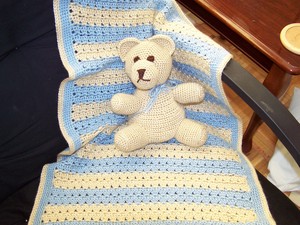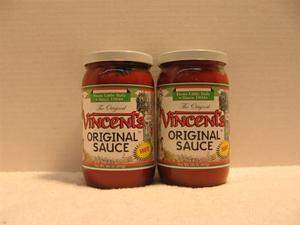“To Johnny Bench-A Hall of Famer for sure”! Ted Williams wrote that on a baseball for Johnny Bench during spring training in 1968, and the prediction came to fruition a little over two decades later. Johnny Bench is considered by many to be the greatest catcher of all time. Johnny Bench played his whole seventeen seasons in baseball with the Cincinnati Reds, and when his career was done, it was only a matter of time before Cooperstown opened its doors to him.
A native of Binger, Oklahoma, Johnny Bench was born on December 7th, 1947. His father told him that if he wanted to become a Major League Baseball player, which was the dream of Johnny Bench, that the surest way was to learn to be a catcher. His dad would have him throw, from a crouching position, 254 feet, or twice the distance from home plate to second base. With the help of this training, Johnny Bench developed what is regarded as the strongest throwing arm of any catcher that ever lived. Johnny Bench had huge hands, so large than he could hold seven baseballs at once! The Reds chose Johnny Bench in the second round of the amateur draft in 1965, and the eighteen year old kid was sent to Peninsula of the Carolina League, where he was named The Sporting News Minor League Player of the Year and actually had his number retired- as soon as was done playing there!
Playing in Buffalo of the International League for most of 1967, Johnny Bench hit a grand slam off the Orioles’ Jim Palmer in July. Palmer was there rehabbing his bad back; the future Hall of Famer never surrendered a grand slam in the majors. Johnny Bench was promoted to the big club at the end of the year, but he batted just .163 in 26 games, with one homer and 6 runs batted in. But the confidence that Johnny Bench, and the Reds, had in his ability was not shattered, and he began 1968 as the full time catcher. He even bragged that “I can throw out any man alive” and he may have been right! The Reds were beginning to assemble the squad that would dominate the National League for the next few seasons and become known as “The Big Red Machine”, and Johnny Bench became a huge part of it. He won Rookie of the Year honors over the Mets’ Jerry Koosman when he batted .275 with 82 runs batted in. He handled a veteran pitching staff like a seasoned pro. Cincinnati hurler Jim Maloney said, “He’ll come out to the mound and treat me like a two year old, but so help me, I like it”. The next season he did even better, collecting 26 homers and 92 RBI, and Johnny Bench, at age 21, was perched on the edge of certain superstardom.
Johnny Bench had his greatest season in the majors, and one of the best by any catcher, when he belted 45 home runs and knocked in 145 runs. His 355 total bases where a record for a catcher, and his defense behind the plate was outstanding. He was awarded his third straight Gold Glove for his position; Johnny Bench would win the award every year for his first ten campaigns. The Reds met the Orioles in the World Series, but Johnny Bench hit just .211 in a five game loss to Baltimore. Johnny Bench was named National League MVP in November. When he slumped to a pedestrian .238 average in 1971, with just 61 RBI, many felt Johnny Bench could be a one year wonder.
However, a second MVP season awaited Johnny Bench in 1972, as he smashed 40 homers and garnered 125 runs batted in. His rifle arm behind the plate kept opposing runners in check. Johnny Bench was one of the first catchers to use a hinged mitt and he perfected the style of catching with only one hand, keeping his throwing hand protected behind his back to avoid foul tips. He also was the first catcher to wear a helmet behind the plate. In the 1972 playoffs versus Pittsburgh, Johnny Bench tied the deciding Game Five with a ninth inning home run and then watched as the Reds went on to victory and the World Series against the Oakland A’s. In Game Three of that confrontation, with men on second and third and two outs in the eighth inning, the A’s Rollie Fingers ran the count on Johnny Bench to 3-2. The A’s looked like they were then apparently calling for an intentional walk, but the catcher then snuck back behind Johnny Bench and Fingers threw strike three called. The Reds still won the game 1-0, but would lose the Series in seven thrilling games.
The next few seasons were extremely productive for Johnny Bench as he produced over one hundred RBI in 1973, ’74, and ’75. Cincinnati finally won a championship in 1975, over the Red Sox in that heart-stopping seven game World Series, yet Johnny Bench hit only .207 in the Fall Classic. The next year, despite an off season for the now 28 year old Johnny Bench, he dominated the World Series against the Yankees, hitting .533 and knocking in six runs in a four game blowout of New York. He was named the MVP of the Series, and when his manager, Sparky Anderson basically stated that Johnny Bench was far superior to the Yankees Thurman Munson, it caused a bit of a controversy. “I don’t want to embarrass any other catcher by comparing him to Johnny Bench”, Anderson gushed. But there was now no denying that Johnny Bench was a great player.
After three more solid seasons, Johnny Bench’s knees began to wear own from the rigors of catching, and he was able to talk the Reds into letting him play first or third base. He ended his career there rather than behind the plate, and finally retired after the 1983 season ended. He was a first ballot Hall of Fame inductee in 1989, fulfilling the prophecy of Ted Williams, and the Reds retired his number 5. Johnny Bench collected 389 homers; his 329 were the most ever by a catcher until passed by Carlton Fisk and Mike Piazza. He had 1,376 runs batted in and his fielding percentage as a catcher was an incredible .990. Johnny Bench was chosen for the All-Century team in 1999, arguably the finest player ever to wear the so called “tools of ignorance”.



